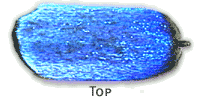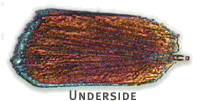I want one😍
Interesting. Can’t imagine how that works…
Rather obvious, isn’t it? Magic!
They look like classic “interference” colors similar to what you get from a very thin coating on metal. Titanium does this when heated or anodized, and you can get those colors on steel or stainless steel with careful heat treating. I can’t imagine how they do it on plastic, and since they don’t show any examples of what would be their most innovative application I bet they can’t.
now I’m going to be wondering all day as to how they did that. Right now I can’t even come close and that always bugs me. Color is a derivative of wave length but how would you use a laser to affect the material to reflect only a particular wavelength? Very cool. I noticed on their site too that though they claim plastics and other materials, just about everything they show is stainless steel, but then again, that’s really cool.
My guess is that they are using the laser to make a diffraction grating on the metal. The very thin parallel lines create according to Google “a plate of glass or metal ruled with very close parallel lines, producing a spectrum by diffraction and interference of light.”. The hard part, I think, is making the lines consistently parallel and spaced just right to make the colors desired. Bump the machine or jostle the work and crap! You’ve got to start over.
Looks basically like the titanium tests hirudin did a few weeks back, similar for steel likely the heat treat colors someone mentioned earlier in the thread. Looking at their website, their tools are pulsed fiber lasers, thus likely much finer heat control. Still amazing to get that level of control. I bet ya those are a bit more vs the glow forge though.
Ruling a traditional grating would mean spacings close to the wavelength of visible light, which is hard for an IR laser. (you can do it, but.) Making oxide or other surface layers with thickness comparable to visible light wavelength is likely easier.
I bet you can do it on plastic if your laser has very fast pulses, so that you can affect the surface layer(s) without melting or otherwise upsetting the bulk material. (If only I had stuck with physics.)
Yeah - very careful control of oxidation layers, plus some dithering to get in-between colors. Right now they appear to use a fixed matrix dither/halftone - hopefully they can improve that to use a diffusion dither for a smoother appearance.


